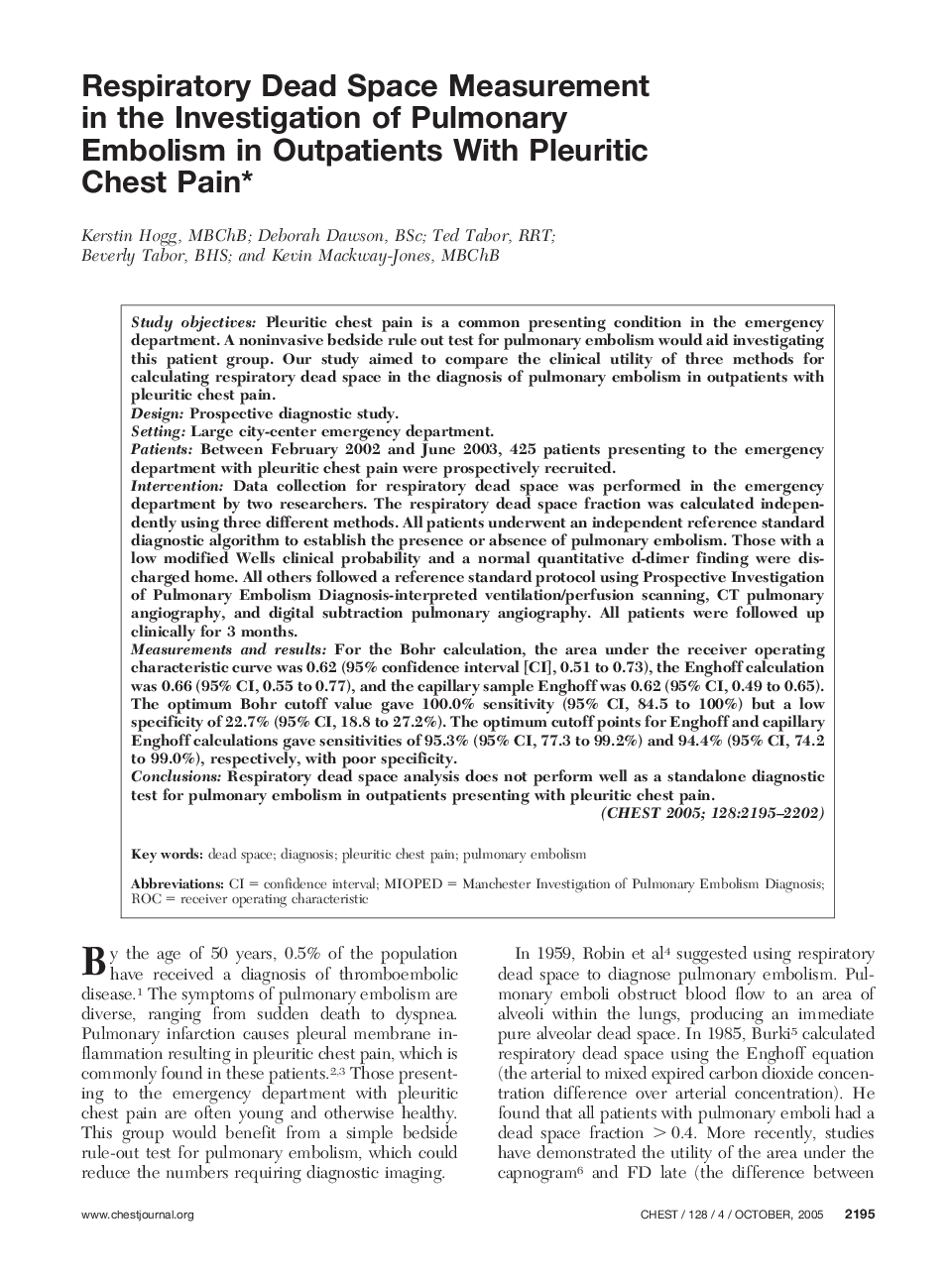| کد مقاله | کد نشریه | سال انتشار | مقاله انگلیسی | نسخه تمام متن |
|---|---|---|---|---|
| 2907100 | 1173488 | 2005 | 8 صفحه PDF | دانلود رایگان |

Study objectivesPleuritic chest pain is a common presenting condition in the emergency department. A noninvasive bedside rule out test for pulmonary embolism would aid investigating this patient group. Our study aimed to compare the clinical utility of three methods for calculating respiratory dead space in the diagnosis of pulmonary embolism in outpatients with pleuritic chest pain.DesignProspective diagnostic study.SettingLarge city-center emergency department.PatientsBetween February 2002 and June 2003, 425 patients presenting to the emergency department with pleuritic chest pain were prospectively recruited.InterventionData collection for respiratory dead space was performed in the emergency department by two researchers. The respiratory dead space fraction was calculated independently using three different methods. All patients underwent an independent reference standard diagnostic algorithm to establish the presence or absence of pulmonary embolism. Those with a low modified Wells clinical probability and a normal quantitative d-dimer finding were discharged home. All others followed a reference standard protocol using Prospective Investigation of Pulmonary Embolism Diagnosis-interpreted ventilation/perfusion scanning, CT pulmonary angiography, and digital subtraction pulmonary angiography. All patients were followed up clinically for 3 months.Measurements and resultsFor the Bohr calculation, the area under the receiver operating characteristic curve was 0.62 (95% confidence interval [CI], 0.51 to 0.73), the Enghoff calculation was 0.66 (95% CI, 0.55 to 0.77), and the capillary sample Enghoff was 0.62 (95% CI, 0.49 to 0.65). The optimum Bohr cutoff value gave 100.0% sensitivity (95% CI, 84.5 to 100%) but a low specificity of 22.7% (95% CI, 18.8 to 27.2%). The optimum cutoff points for Enghoff and capillary Enghoff calculations gave sensitivities of 95.3% (95% CI, 77.3 to 99.2%) and 94.4% (95% CI, 74.2 to 99.0%), respectively, with poor specificity.ConclusionsRespiratory dead space analysis does not perform well as a standalone diagnostic test for pulmonary embolism in outpatients presenting with pleuritic chest pain.
Journal: Chest - Volume 128, Issue 4, October 2005, Pages 2195–2202